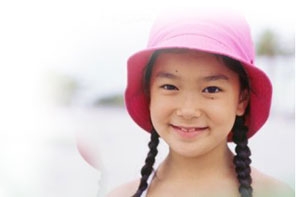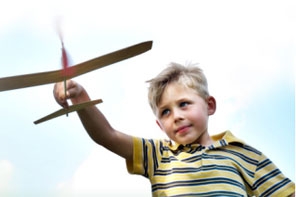Overview
Children are not offered contact lenses as a treatment option for refractive error as routinely as teens. The Contact Lenses in Pediatrics (CLIP) study examined the benefits of contact lens wear for children and teens to see if children benefit as much as teens from contact lenses as a treatment for refractive error.

In the CLIP Study, contact lens wear dramatically improved how both children and teens felt about their appearance and participation in activities, leading to greater satisfaction with their refractive error correction. Chair time for fitting each group was similar, with children taking a little more than 10 minutes longer than teens – primarily for insertion and removal training.
Success stories
A group of optometrists share their experiences in fitting young patients with contact lenses.
View article from Contact Lens Spectrum
Study details
The study took place at The Ohio State University College of Optometry, New England College of Optometry and University of Houston School of Optometry.

The study looked at comparing contact lens fitting and follow-up times between children and teens, because parents often report that their Eye Care Professional will not fit their child with contact lenses until he or she is at least 13 years of age, or often later.
At the baseline visit, study participants (84 children aged eight to 12 and 85 teens aged 13 to 17) underwent a contact lens fitting, including visual acuity, refraction, autorefraction and biomicroscopy. They then underwent contact lens insertion and removal training.
Participants were fitted with either ACUVUE® ADVANCE® with HYDRACLEAR® or ACUVUE® ADVANCE® for ASTIGMATISM.
Fitting time, insertion and removal training time and the time of follow-up visits were measured individually and added for a total chair time.
Visual acuity, contact lens fit assessment and biomicroscopy were performed at one-week, one-month and three-month follow-up visits.
Results
Younger kids don't require much more time to fit with contact lenses than teenagers. And they can be really fun to work with.

Both children and teens in the CLIP study physiologically adjusted to contact lens wear similarly and were capable of providing adequate contact lens care.
Total chair time for children and teens was similar, with children taking slightly more than 10 minutes longer than teens for insertion and removal training. Since insertion and removal is generally taught by staff members, the Eye Care Professional spent a similar amount of time with child and teen patients.
Neither children nor teens experienced problems related to contact lens wear during the study.
Download overview of CLIP study
Download study charts and graphs
In a post-CLIP study lifestyle questionnaire, parents gave high marks for the stability of contact lenses, as well as for their child's or teen's ability to care for their lenses responsibly. Parents also strongly preferred UV-blocking contact lenses for their child or teen.
Download original article from Optometry and Vision Science
Benefits for children
Contact lens wear dramatically improved how CLIP Study participants felt about their appearance and participation in activities.

Children and teens responded to questions from the Paediatric Refractive Error Profile (PREP) – a paediatric quality of life survey related to wearing contact lenses and glasses. At their baseline visit, participants completed the PREP for glasses. They completed the PREP for contact lenses at subsequent visits made one week, one month and three months after receiving contact lenses. The two surveys were identical, except the word "glasses" was replaced with "contact lenses".
Children and teens in the CLIP study reported significant improvements in quality of life within one week of being fitted with contact lenses. After wearing contact lenses for three months, the overall PREP score increased by 23% for children and by 24% for teens. Areas of greatest improvement were satisfaction with vision correction, activities and appearance.
Download original article from eye and contact lens
Conclusion
Eye Care Professionals should consider routinely offering contact lenses as a treatment for refractive error to children as young as eight years of age.


